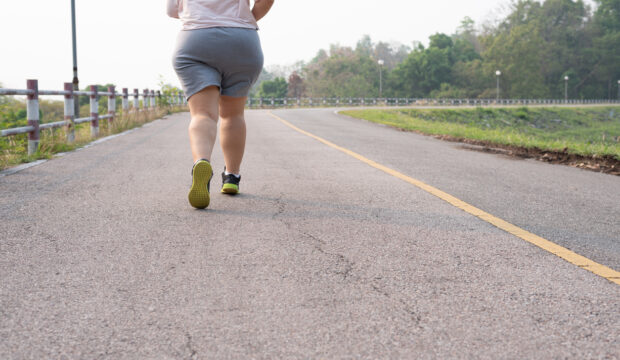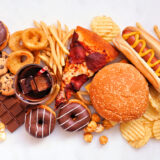Introduction
When people think of weight loss, they often picture strict diets or exercise. Yet, you may have found yourself saying, “I’ve been exercising, but the scale won’t budge!”. It turns out that NEAT (Non-Exercise Activity Thermogenesis) — the energy you expend through everyday movements — may have an even bigger impact on your weight management than formal workouts or dietary restrictions.
In this article, we’ll explore what NEAT is, why it matters, how much of your daily energy expenditure it might account for, and how 10,000 steps or switching from seated to standing work can boost your daily calorie burn. Even small tweaks in your routine can significantly increase your overall energy expenditure, so read on for practical tips.
What is NEAT? Daily Activities Beyond Exercise
NEAT (Non-Exercise Activity Thermogenesis) refers to the energy you expend on all physical movements that aren’t classified as formal exercise. These can include activities like commuting, shopping, housework, playing with children, walking the dog, or even fidgeting. In contrast, energy burned specifically through exercise is known as EAT (Exercise Activity Thermogenesis).
While we commonly focus on planned workouts, like aerobic exercise or strength training, it’s often the routine, incidental physical activity throughout the day (NEAT) that accounts for a larger portion of total daily energy expenditure.
How Much of Your Daily Calorie Burn Comes from NEAT?
Total Daily Energy Expenditure (TDEE) is generally divided into three main components:
- Basal Metabolic Rate (BMR): About 50–70% of daily energy use, essential for basic life functions
- Thermic Effect of Food (TEF): Around 10% of your daily calorie burn, resulting from digestion and nutrient absorption
- Physical Activity: Includes both EAT (planned exercise) and NEAT, making up roughly 20–40% of total expenditure
Within “physical activity,” NEAT can sometimes outweigh EAT. For instance, a 30-minute walk may burn only a few dozen to a few hundred calories.
However, by frequently standing, walking short distances, and performing other small movements, the total can surpass that of planned exercise. There are reports of a difference of hundreds of kilocalories per day in NEAT alone between individuals with sedentary habits and those with more active lifestyles.
Seated vs. Standing Work: The Calorie Burn Gap
For those with desk jobs, “sitting for extended periods” is a prime factor diminishing NEAT. That’s where standing desks and related strategies come into play.
Research suggests that standing for tasks can burn several dozen more calories per hour compared to sitting. In some cases, that can mean an additional 20–50 kcal per hour for certain individuals.
If you assume an 8-hour workday, this could add up to 150–300 kcal above what you’d expend if seated the entire time — a difference that may significantly impact weight management and reduced health risks.
Moreover, standing involves sustained use of core and lower-body muscles, promoting better posture and potentially helping prevent lower back pain. Still, standing all day can create other types of strain, so alternating between sitting and standing is often ideal.
The following table shows estimated NEAT values by occupation type. Completely chair-bound work may account for around 300 kcal, while sedentary jobs with some movement hover around 700–1000 kcal. Standing jobs can reach around 1400 kcal, and more vigorous work like farming can go up to 2300 kcal.

Simple Ways to Boost Your NEAT
The biggest factor in increasing NEAT is to focus on “reducing the amount of time spent sitting.” Even if your daily routine involves desk work or prolonged screen use, small changes can substantially raise your overall energy expenditure.
◆ Stand Up and Walk Regularly
- Prevent excessive sitting by setting a timer to stand up every 30–60 minutes
- Take some phone calls or online meetings while standing
- Take a deliberately longer route to the water cooler or bathroom
◆ Make Use of Chores and Small Tasks
- Clean, do laundry, or handle yard work more frequently to incorporate consistent activity
- Try standing up for a quick stretch during TV commercials
◆ Choose Active Transportation
- Use the stairs instead of the elevator
- Consider swapping driving for biking or public transit and walk at least one stop’s worth
By implementing these small strategies, you can significantly boost your NEAT. Even if structured workouts aren’t your thing, simply injecting more activity into everyday tasks can have a measurable impact on calorie burn.
Conclusion
Exercise is an essential component of a healthy weight-loss plan, but it doesn’t guarantee results by itself. NEAT often makes up a surprisingly large share of daily energy expenditure, and “small bursts of activity like standing or brief walks” can add up to a significant calorie burn.
In particular, turning chores and errands into forms of incidental exercise makes it easier to stay consistent and encourages fat burning.
Additionally, pairing a standing desk with your typical seated work can substantially raise your daily calorie burn.
If you’ve been struggling with weight loss or weight management, consider “boosting NEAT” and look for ways to revise your daily habits to include more movement.
References
- Levine JA. (2004). “Non-exercise activity thermogenesis (NEAT).” Best Practice & Research Clinical Endocrinology & Metabolism.
- Levine JA et al. (2005). “Role of nonexercise activity thermogenesis in resistance to fat gain in humans.” Science.
- Thompson DL et al. (2004). “How many steps/day are enough? Preliminary pedometer indices for public health.” Sports Medicine.
- Chau JY et al. (2013). “Sedentary behavior and risk of mortality from all causes and cardiometabolic diseases in adults.” Ann Intern Med.
- Swartz AM et al. (2011). “Energy expenditure of standing versus sitting in computer tasks.” Journal of Physical Activity & Health.







Comment